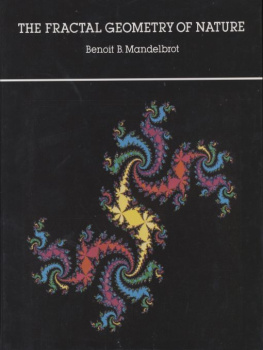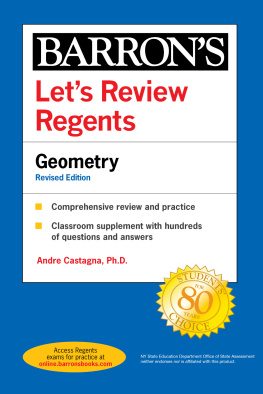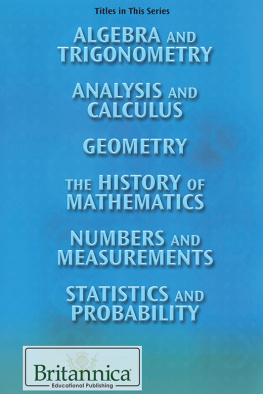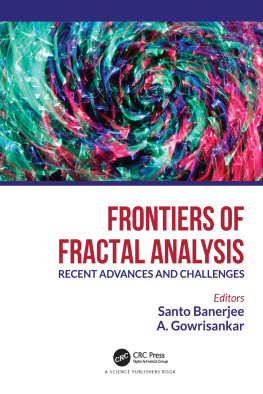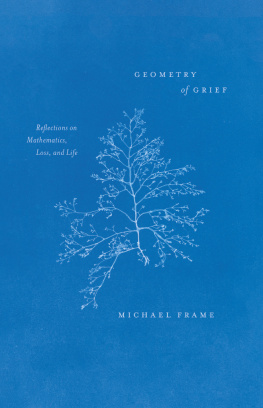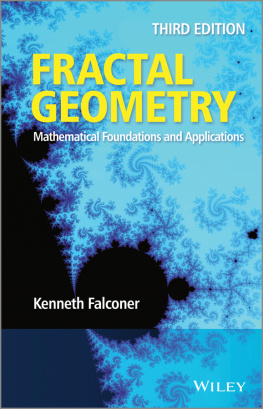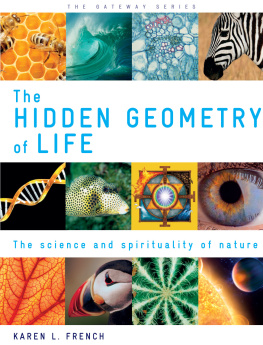Table of Contents
Benoit B. Mandelbrot is Abraham Robinson Professor of Mathematical Sciences at Yale University and IBM Fellow Emeritus (Physical Sciences) at the IBM T. J. Watson Research Center. He is presently preparing a multi-volume Selecta. He is a Fellow of the American Academy of Sciences, and Foreign Associate of the U.S. National Academy of Sciences.
He received the 1993 Wolf Prize for Physics. His other awards include the 1985 F. Barnard Medal for Meritorious Service to Science (Magna est Veritas), granted by the U.S. National Academy of Sciences and Columbia University, the 1986 Franklin Medal for Signal and Eminent Services in Science from the Franklin Institute of Philadelphia, the 1988 Charles Proteus Steinmetz Medal from IEEE and Union College, the 1988 (first) Science for Art Prize from Met-Hennessy-Louis Vuitton, the 1989 Harvey Prize for Science and Technology from Technion in Haifa, the 1991 Nevada Prize, and the 1994 Honda Prize. He also received a Distinguished Service Award for Outstanding Achievement from the California Institute of Technology, and a Humboldt Preis from the Alexander von Humboldt Stiftung.
Graduate of the Pars cole Polytechnique; M.S. and Ae.E. in Aeronautics, California Institute of Technology; Docteur s Sciences Mathmatiques, University of Paris. 0 Doctor of Science, honoris causa: Syracuse University, Laurentian University, Boston University, State University of New York, University of Guelph, University of Dallas, Union College, and the University of Buenos Aires. Doktor, honoris causa, Universitt Bremen. Doctor of Humane Letters, honoris causa: Pace University. Doctor Philosophaiae, honoris causa, University of Tel Aviv.
Mandelbrots positions before joining IBM were with the CNRS in Paris, Philips Electronics, M.I.T., the Princeton Institute for Advanced Study, the University of Geneva, the University of Lille and cole Polytechnique. 0 He served as Institute lecturer at M.I.T. and Visiting Professor of Economics, later of Applied Mathematics, and then of Mathematics at Harvard, of Engineering at Yale, of Physiology at the Albert Einstein College of Medicine, and of Mathematics at the University of Paris-Sud, as Professor of the Practice of Mathematics at Harvard, and as Professor de lAcadmie des Sciences lcole Polytechnique.
AMS Classifications: Primary, 5001, 2875, 60D05; Secondary, 42A36, 54F45, 60J65, 76FO5, 85A35, 86A05.
Current Physics Index Classification (ICSU):
o5.40. +j, 45.30.-b, 98.20.Qw, 91.65.Br.
Library of Congress Cataloging in Publication Data
Mandelbrot, Benoit B.
The fractal geometry of nature.
Rev. ed. of: Fractals. c1977.
Bibliography: p.
Includes index.
ISBN-13: 978-0-7167-1186-5
ISBN-10: 0-7167-1186-9
1. Geometry. 2. Mathematical models. 3. Stochastic processes. I. Title.
QA447.M357 1982 516.15 81-15085
AACR2
Copyright 1977, 1982, 1983 by Benoit B. Mandelbrot
No part of this book may be reproduced by any mechanical, photographic, or electronic process, or in the form of a phonographic recording, nor may it be stored in a retrieval system, transmitted, or otherwise copied for public or private use, without written permission from the publisher.
Printed in the United States of America
30 29 28 27 26 25 24 23 22
Distributed in Canada by H. B. Fenn and Company Ltd.
In Memoriam, B. et C.
Pour Aliette
FOREWORD
This work follows and largely replaces my 1977 Essay, FRACTALS: FORM, CHANCE AND DIMENSION, which had followed and largely replaced my 1975 Essay in French, LES OBJETS FRACTALS: FORME, HASARD ET DIMENSION. Each stage involved new art, a few deletions, extensive rewriting that affected nearly every section, additions devoted to my older work, andmost importantextensive additions devoted to new developments.
Richard F. Voss made an essential contribution to the 1977 Essay and to this work, especially by designing and now redesigning the fractal flakes, most landscapes, and the planets. The programs for many striking illustrations new to this Essay are by V. Alan Norton.
Other invaluable, close, long-term associates were Sigmund W. Handelman, then Mark R. Laff, for computation and graphics, and H. Catharine Dietrich, then Janis T. Riznychok, for editing and typing.
Individual acknowledgments for the programs behind the illustrations and for other specific assistance are found after the list of references at the end of the volume.
For their backing of my research and my books, I am deeply indebted to the Thomas J. Watson Research Center of the International Business Machines Corporation. As Group Manager, Department Director, and now Director of Research, IBM Vice President Ralph E. Gomory imagined ways of sheltering and underwriting my work when it was a gamble, and now of giving it all the support I could use.
My first scientific publication came out on April 30, 1951. Over the years, it had seemed to many that each of my investigations was aimed in a different direction. But this apparent disorder was misleading: it hid a strong unity of purpose, which the present Essay, like its two predecessors, is intended to reveal. Against odds, most of my works turn out to have been the birth pangs of a new scientific discipline.
I
INTRODUCTION
Theme
Why is geometry often described as cold and dry? One reason lies in its inability to describe the shape of a cloud, a mountain, a coastline, or a tree. Clouds are not spheres, mountains are not cones, coastlines are not circles, and bark is not smooth, nor does lightning travel in a straight line.
More generally, I claim that many patterns of Nature are so irregular and fragmented, that, compared with Euclida term used in this work to denote all of standard geometryNature exhibits not simply a higher degree but an altogether different level of complexity. The number of distinct scales of length of natural patterns is for all practical purposes infinite.
The existence of these patterns challenges us to study those forms that Euclid leaves aside as being formless, to investigate the morphology of the amorphous. Mathematicians have disdained this challenge, however, and have increasingly chosen to flee from nature by devising theories unrelated to anything we can see or feel.
Responding to this challenge, I conceived and developed a new geometry of nature and implemented its use in a number of diverse fields. It describes many of the irregular and fragmented patterns around us, and leads to full-fledged theories, by identifying a family of shapes I call

